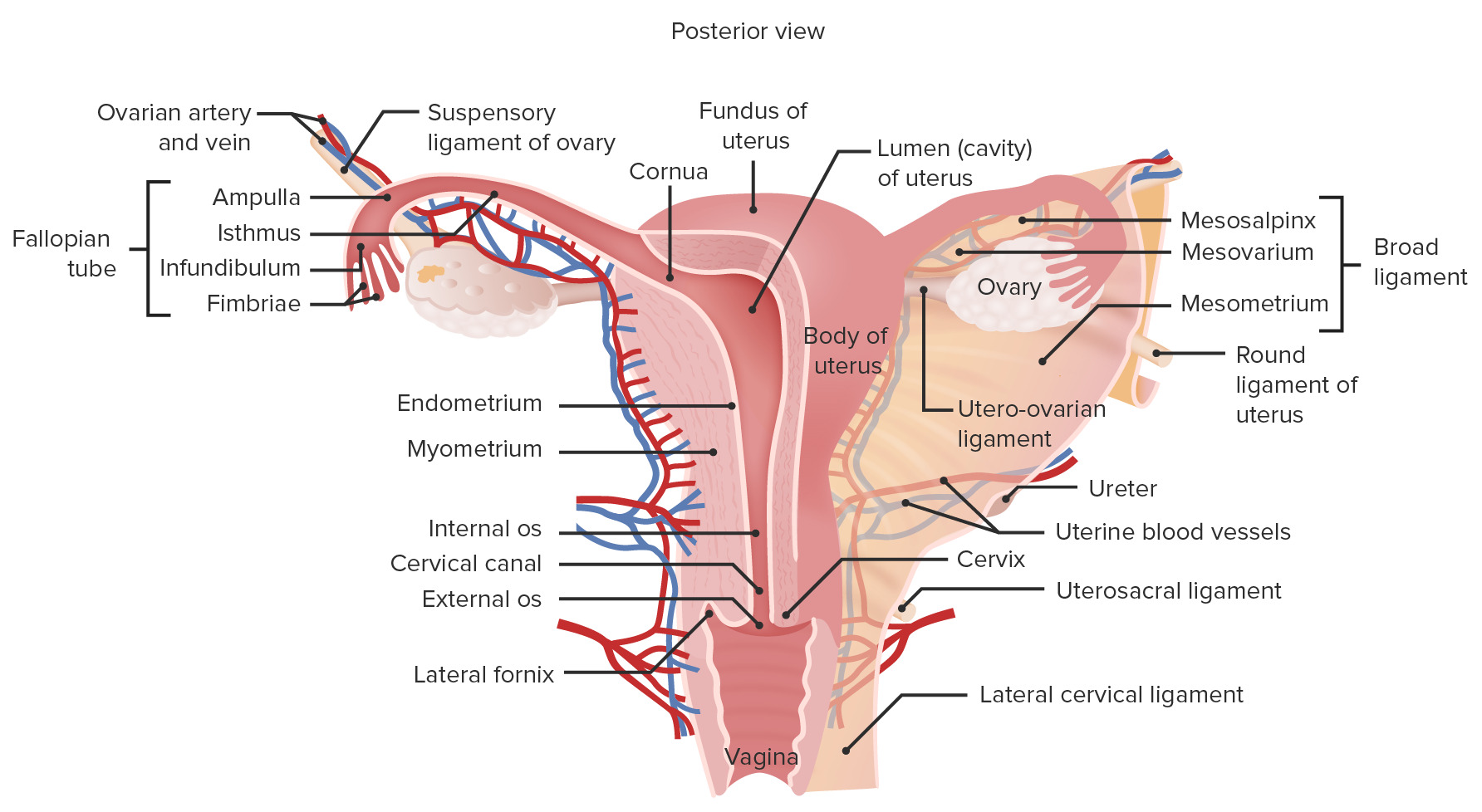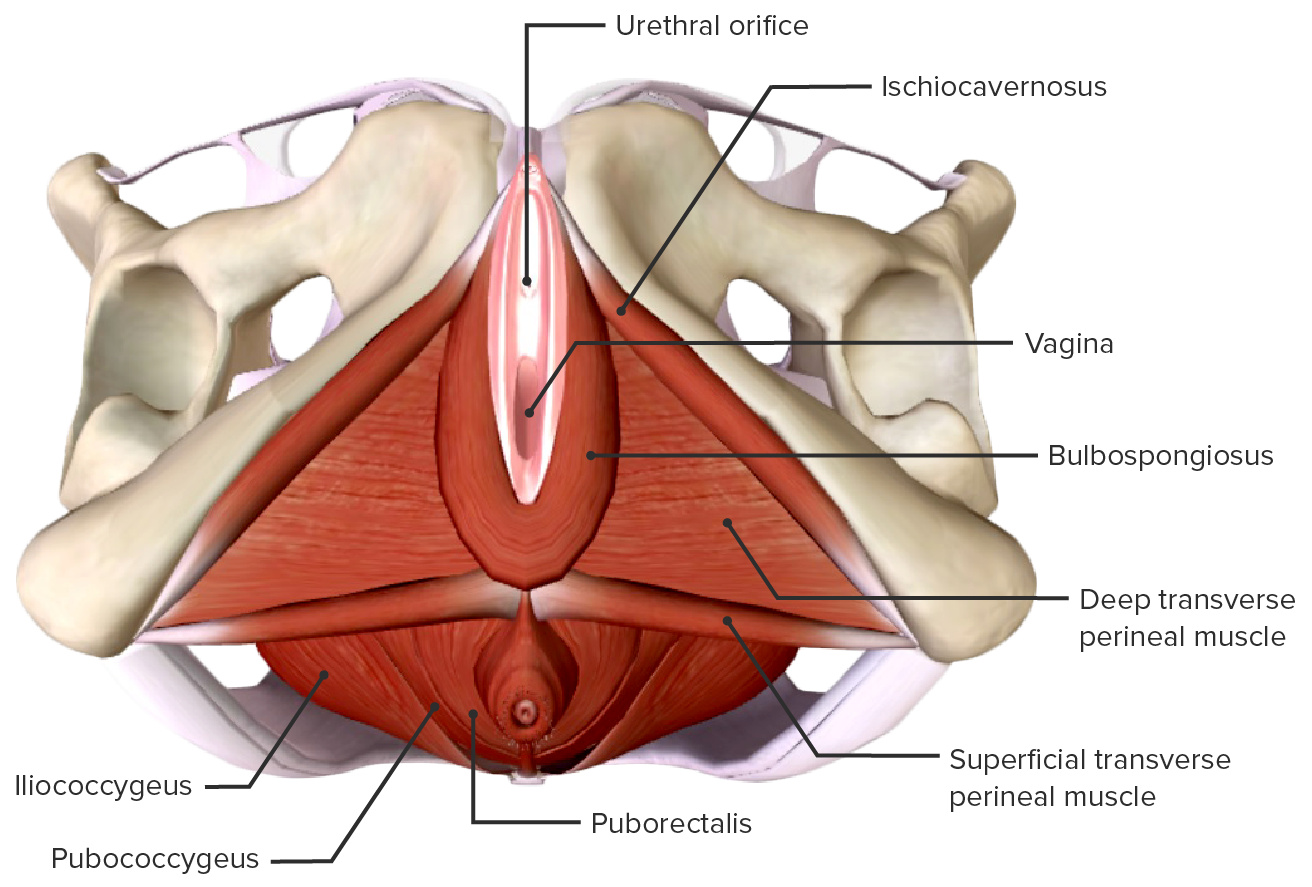Playlist
Show Playlist
Hide Playlist
Proliferative Phase – Female Reproductive System
-
Slides 09 Human Organ Systems Meyer.pdf
-
Download Lecture Overview
00:01 Have a look now at a description, and also some detailed evidence of what occurs during the proliferative phase of the cycle. On the left-hand side, again, you see a histological section through the endometrium just after menstruation. And you don’t see a lot of the core glands and the bluey stained characteristics of the endometrium you saw earlier. You do see the base of these coiled glands in this section. What you’re looking at here is the basal layer that’s shown on the diagram on the right-hand side. 00:48 That basal layer, as I explained earlier, remains after menstruation. And what happens is that if you look at the diagram, you can see there is a division, a white line going through, meaning that the top part, the functional part is lost during menstruation. And under the influence of estrogens, these glands to the left, the components left in the basal layer, can proliferate and grow, and grow up to the surface and repair, re-epithelialize the surface of the endometrium, again, under the influences of estrogens. So that’s why that basal layer is very important to repair all the glands, the surface of the endometrium. And also cells within the connective tissues, the lamina propria of the endometrium, can then divide and the thickness can increase and grow again, as I said before, under the influence of estrogens. 01:54 The diagram illustrates what happens during menstruation. And I just want to briefly go through that. Remember, the spiral artery supplies the functional layer of the endometrium during the secretory phase of the endometrium. At the end of this secretory phase, when there has been no support or no indication, no implantation in the endometrium, then with support for this is withdrawn, progesterone is withdrawn from the ovary, from the corpus luteum. 02:36 LH is inhibited, so the corpus luteum shuts down, so progesterone shuts down, and the estrogens start to decline. That brings about a sudden change in that secretory endometrium that I've described earlier. And what happens is that those spiral arteries undergo a spasmodic change in their supply of blood. One minute blood flowing through them, and then there’s stoppage. And this occurs over a period of time until finally, those coil arteries actually rupture, and then the blood flows into the lamina propria shown here labelled 2. And the lamina propria then becomes engorged with blood, and then finally, the tissue is shed from the surface indicated by the number 3 there. So at so spiral arteries, the spasmodic supplying withdrawal of blood through those arteries, and therefore, the breakage of these arteries and then the necrosis occurring, that is responsible for the shedding of that functional layer of the endometrium at menstruation. The basal layer remains because as you can see, number 4 indicated there, that little straight basal artery remains supplying that area with blood. 04:00 It doesn’t go through the spasmodic changes that that coiled or spiral artery undergoes. 04:06 So blood is still continually supplied to that basal layer. It is important then that you can appreciate what occurs after menstruation under the influence of estrogens, that this endometrium is then repaired, and it’s called the proliferative phase or estrogenic phase. And you can see on this slide that there is rising levels of estradiol, the most important estrogen. Progesterone is very low there. And this estrogen, remember, is coming from the ovary, coming from the follicles of the ovary during the follicular phase. As the follicle grows, they put out, secrete more estrogens, and that’s reflected in the blood and reflected in this profile here you see. And those rising estrogen levels are responsible for repairing that endometrium. On the right-hand side, you can see after ovulation, after the LH surge and the corpus luteum forms and secretes progesterone, progesterone rises. And that’s responsible for, as I mentioned earlier, the secretory activity of the endometrium. You can see all the coiled glands in this particular section. 05:29 So that’s called the secretory phase of this menstrual cycle. It’s often called the progestational stage. And this little diagram, again, illustrates the changes that occur in the glands going through each of the stages. Number 1 there, the endometrium gland is lost. Part of it is lost during menstruation. And then, number 2 there indicates that under the influence of the estrogens, these glands repair themselves, a lot of mitotic activity going on to repair the glands and to repair the surface of the endometrium. And the gland grows, as you see in number 3 there, under the influence of estrogens. And then after ovulation, under the influence of progesterone, the glands become secretory and coiled, as you also see in this slide. And you have the development of the spiral arteries going up into the endometrium. I’ve labelled some little decidual like cells in this diagram in the secretory phase of the endometrium. These cells appear at this stage under the influence of progesterone. And what they do is later on, should there be an implantation occurring, these decidual cells can then tend to wrap around the implanted blastocyst and provide nutrients to that blastocyst as it goes through its development. And then towards the end of pregnancy, it forms a layer between the placenta and the lining of the uterus, the endometrium. And that layer is a layer that makes the placenta separate easily away from the endometrium at the end of pregnancy. And here is a diagram to summarize those changes I’ve just described during the proliferative phase in the glands, and also the secretory phase in the glands. And superimposed above are the profiles of the hormones to stress to you the importance of the function of estrogen and also progestin at various stages of this menstrual cycle.
About the Lecture
The lecture Proliferative Phase – Female Reproductive System by Geoffrey Meyer, PhD is from the course Reproductive Histology.
Included Quiz Questions
Which of the following is INCORRECT?
- The arcuate artery in the myometrium branches off of the basal artery.
- Estrogen secreted by the follicle causes proliferative changes of the menstrual cycle.
- Progesterone secreted by the corpus luteum causes secretory changes of the menstrual cycle.
- The basal layer of the endometrium is retained after menstruation.
- Withdrawal of luteinizing hormone ceases progesterone production by the corpus luteum.
Which of the following changes is LEAST likely to occur at the end of the secretory phase?
- Estrogen serum level increases
- A corpus albicans forms.
- Progesterone serum level decreases
- The endometrium starts shedding
- Luteinizing hormone is inhibited.
Which of the following types of arteries temporarily supplies blood to the endometrium of the uterus during the luteal phase of the menstrual cycle?
- Spiral
- Basal
- Radial
- Arcuate
- Ovarian
Which of the following changes occurs in endometrial glands after ovulation?
- Initiation of secretory activity
- Increase in mitoses
- Shedding
- Inhibition of secretory activity
- Reduction in size
Customer reviews
5,0 of 5 stars
| 5 Stars |
|
5 |
| 4 Stars |
|
0 |
| 3 Stars |
|
0 |
| 2 Stars |
|
0 |
| 1 Star |
|
0 |






